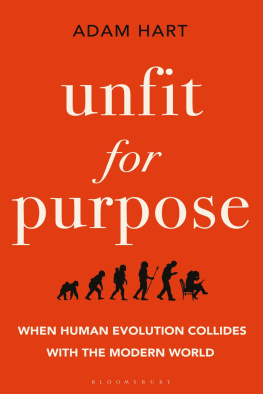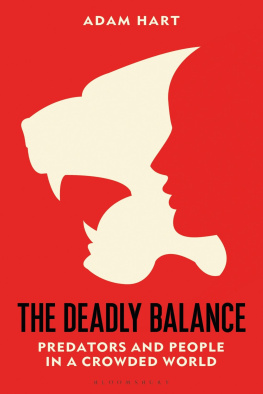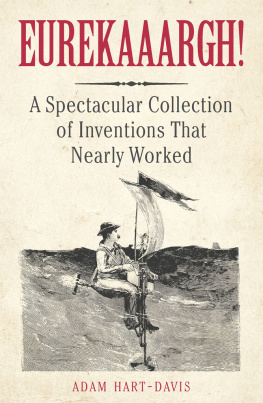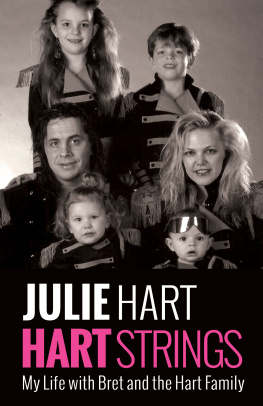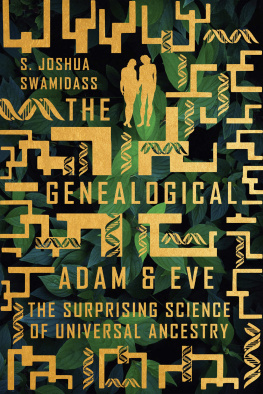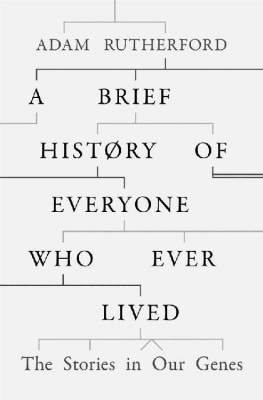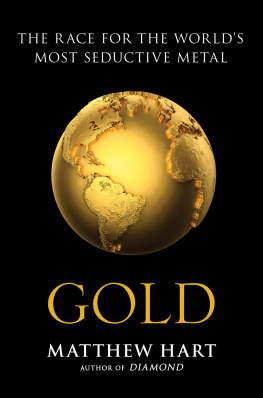Adam Hart - Unfit for Purpose: When Human Evolution Collides With the Modern World
Here you can read online Adam Hart - Unfit for Purpose: When Human Evolution Collides With the Modern World full text of the book (entire story) in english for free. Download pdf and epub, get meaning, cover and reviews about this ebook. year: 2020, publisher: Bloomsbury, genre: Romance novel. Description of the work, (preface) as well as reviews are available. Best literature library LitArk.com created for fans of good reading and offers a wide selection of genres:
Romance novel
Science fiction
Adventure
Detective
Science
History
Home and family
Prose
Art
Politics
Computer
Non-fiction
Religion
Business
Children
Humor
Choose a favorite category and find really read worthwhile books. Enjoy immersion in the world of imagination, feel the emotions of the characters or learn something new for yourself, make an fascinating discovery.
- Book:Unfit for Purpose: When Human Evolution Collides With the Modern World
- Author:
- Publisher:Bloomsbury
- Genre:
- Year:2020
- Rating:5 / 5
- Favourites:Add to favourites
- Your mark:
- 100
- 1
- 2
- 3
- 4
- 5
Unfit for Purpose: When Human Evolution Collides With the Modern World: summary, description and annotation
We offer to read an annotation, description, summary or preface (depends on what the author of the book "Unfit for Purpose: When Human Evolution Collides With the Modern World" wrote himself). If you haven't found the necessary information about the book — write in the comments, we will try to find it.
Adam Hart: author's other books
Who wrote Unfit for Purpose: When Human Evolution Collides With the Modern World? Find out the surname, the name of the author of the book and a list of all author's works by series.
Unfit for Purpose: When Human Evolution Collides With the Modern World — read online for free the complete book (whole text) full work
Below is the text of the book, divided by pages. System saving the place of the last page read, allows you to conveniently read the book "Unfit for Purpose: When Human Evolution Collides With the Modern World" online for free, without having to search again every time where you left off. Put a bookmark, and you can go to the page where you finished reading at any time.
Font size:
Interval:
Bookmark:


Also available in the Bloomsbury Sigma series:
Sex on Earth by Jules Howard
Spirals in Time by Helen Scales
A is for Arsenic by Kathryn Harkup
Herding Hemingways Cats by Kat Arney
Death on Earth by Jules Howard
The Tyrannosaur Chronicles by David Hone
Soccermatics by David Sumpter
Big Data by Timandra Harkness
Goldilocks and the Water Bears by Louisa Preston
Science and the City by Laurie Winkless
Bring Back the King by Helen Pilcher
Built on Bones by Brenna Hassett
The Planet Factory by Elizabeth Tasker
Wonders Beyond Numbers by Johnny Ball
I, Mammal by Liam Drew
Reinventing the Wheel by Bronwen and Francis Percival
Making the Monster by Kathryn Harkup
Catching Stardust by Natalie Starkey
Seeds of Science by Mark Lynas
Eye of the Shoal by Helen Scales
Nodding Off by Alice Gregory
The Science of Sin by Jack Lewis
The Edge of Memory by Patrick Nunn
Turned On by Kate Devlin
Borrowed Time by Sue Armstrong
We Need to Talk About Love by Laura Mucha
The Vinyl Frontier by Jonathan Scott
Clearing the Air by Tim Smedley
Superheavy by Kit Chapman
Genuine Fakes by Lydia Pyne
Grilled by Leah Garcs
The Contact Paradox by Keith Cooper
Life Changing by Helen Pilcher
Death by Shakespeare by Kathryn Harkup
Friendship by Lydia Denworth
Sway by Pragya Agarwal
Bad News by Rob Brotherton
For Donna, Emily, Sophie, Daphne and Leo.

Contents
Human beings are amazing. We should never forget that. Not very long ago we stared wide-eyed and barefoot at the Moon; now we can hold Moon rock in our hands. Satellites in orbit let us talk to people anywhere on the planet. We can predict the weather, explore the deepest parts of the oceans, travel at supersonic speeds, perform mind-boggling surgeries, split atoms and comprehend the very fabric of the universe itself. Day-to-day, we are no longer subservient to the vagaries of natures rhythms to feed ourselves. No more clad in animal skins, we seldom need to venture out from our tech-heavy, luxurious homes. Slumped on our sofas, phones in hand, we can see the world, meet friends, order groceries and watch the latest movies through the greatest invention of the modern era, the internet. When we live in a world so completely of our own making, and so divorced from the natural environment, it is very easy for us to forget that beneath the blanket of modern life we are just walking, talking apes. We are amazing certainly, but we are also animals, and the twists and turns of evolution have affected us just as surely as every other living thing on Earth.
The great gulf between what we are as people living in the twenty-first-century world we have created and what we were as evolved animals in our natural environment is the central theme of this book. By examining
Evolution: a primer
We are composed of cells that stick together like building blocks to create a living, functioning organism. There are more than 200 types of cells in humans including skin cells, liver cells, nerve cells, muscle cells, intestinal lining cells, bone cells and fat cells. These cells can group together to create tissues, which are ensembles of similar cells that collectively perform some function. For example, muscle tissue can contract and, by working against our skeleton (itself made of bone tissue), allow us to move, while lung tissue enables us to exchange oxygen and carbon dioxide with the atmosphere. The grouping of different tissues together creates complex organs, like the heart, lungs, stomach and skin, that are capable of performing all the functions we need to maintain life.
The organisation of around 30 trillion cells (see organisation and control, our cells contain complex networks of protein microtubules and fatty membranes, a host of enzymes and an array of tiny structures called organelles.
DNA is at the centre of all this complexity. This famous double-helix molecule is found within the nucleus, a large organelle found in most of our cells. A DNA molecule looks like a twisted ladder with each rung on the ladder being formed from a pair of so-called bases, one on each upright, that reach across and weakly bond with each other. Each base is effectively a letter in the genetic code that directs our cells to make proteins. There are four bases: adenine, thymine, guanine and cytosine, often known by their initials A, T, G and C. The sequence of bases along the DNA molecule is a code that is used by structures in our cells called ribosomes to make molecules called proteins. Proteins have a huge range of functions in our body. They can be structural, like the collagen in our skin or the keratin of our hair; they are the bulk of our muscles; and, as hormones and enzymes, they help to control the many chemical reactions throughout our body. Proteins are built up from long chains of small chemical building blocks called amino acids. These amino acids (there are more than 20 to choose from) join together in a very specific sequence, which determines the properties and the function of the resulting protein. This precise sequence of amino acids is dictated by the order of letters within the DNA molecule. Each amino acid in the protein is coded for by a specific sequence of three bases, called a codon. All of this complexity and organisation arose through the process of evolution.
When we think of human evolution we are usually preoccupied with the more recent stages of our development as a species: characteristics like walking on two legs (bipedalism), our large brain and the evolution of language. These features are important, indeed defining, but we must also understand that most other aspects of our biology have been subject to evolution, in some cases occurring very early in the beginning stages of life itself. The wonderfully complex processes underpinning our metabolism, our nervous system and the synthesis of the proteins that build and control our bodies all evolved long before our ability to walk upright and talk about the weather. For example, the sequence of 10 reactions that comprise a process in our cells called glycolysis occurs in the same way in us, in pandas, in yeast and in bacteria. Glycolysis is the first step in converting the sugar glucose (from our food) into adenosine triphosphate (ATP), a kind of wonder-molecule that delivers energy to cells. This series of reactions and the enzymes that control it evolved long before skeletons and muscles, eyes and ears, logic and language. Likewise, the way our muscles contract at a molecular level involves biochemical pathways and molecules that can also be found in sea anemones, starfish and earthworms. The mechanics of our skeleton, how we digest food, the ways we respond to stress and a whole host of other processes happening at the level of cells, tissues and organs are fundamentally identical to those found in other animals, and indeed in some cases plants, fungi, single-celled organisms and bacteria. That is not to say that the last couple of million years of our evolution havent resulted in more than a few tweaks here and there, but for the most part the basics were laid down a very long time before we came onto the scene.
Biochemical pathways, enzymes, different cell types, bird bills, fish scales, hedgehog prickles and behaviour are all examples of adaptations: characteristics (or traits, to use the evolutionary term) that benefit those individuals possessing them. The development of such traits is usually moderated by specific sequences of DNA that we call genes. We have two copies of each gene, inheriting one from our mother via her egg and the other from our father through the DNA in his sperm. A sequence of DNA letters making up a gene (or genes) results in some property of the individual bearing those genes. This property might result in some individuals surviving and breeding better than others who lack the gene. The fact that genes can be passed on from one generation to the next, and will be present in more offspring of successful parents, is what leads to evolution.
Font size:
Interval:
Bookmark:
Similar books «Unfit for Purpose: When Human Evolution Collides With the Modern World»
Look at similar books to Unfit for Purpose: When Human Evolution Collides With the Modern World. We have selected literature similar in name and meaning in the hope of providing readers with more options to find new, interesting, not yet read works.
Discussion, reviews of the book Unfit for Purpose: When Human Evolution Collides With the Modern World and just readers' own opinions. Leave your comments, write what you think about the work, its meaning or the main characters. Specify what exactly you liked and what you didn't like, and why you think so.

